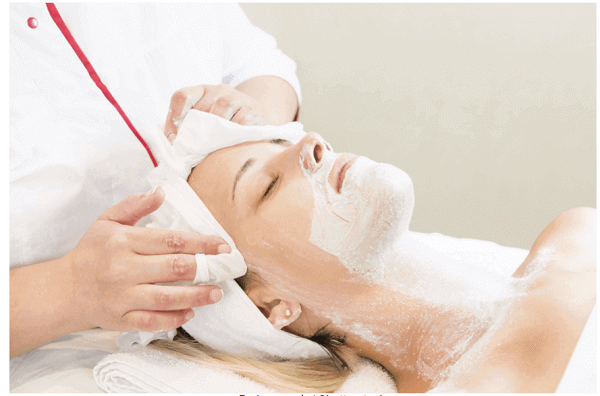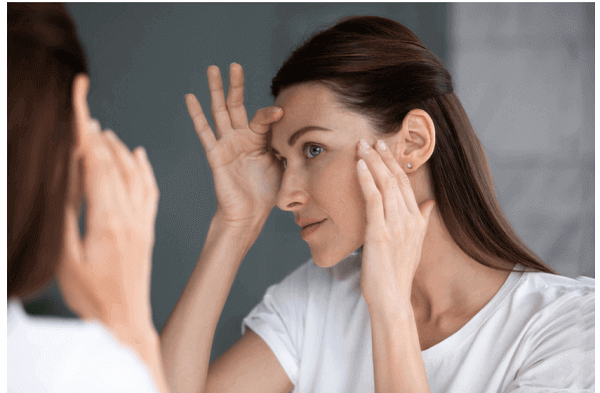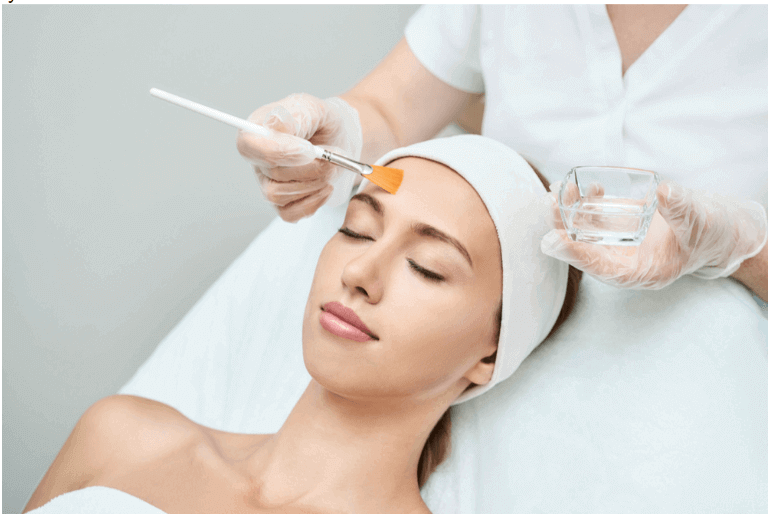Spend a few minutes reading skincare articles or watching YouTube beauty videos, and you will no doubt come across a mention of a chemical peel. While they have been around for a while, these beauty treatments have risen to prominence over the past few years due to their versatility and effectives, as well as the option for both in-home and in-office treatments. If you’re new to the world of face peels, you may feel overwhelmed by all the information, so, to help you out, we’ve broken it down into a handy, easy-to-read guide that will demystify chemical peels for you:
What Is a Chemical Peel?
Contents
Every day, your face sheds billions of dead skin cells, and the top layer of your skin replaces itself every two to four weeks. However, these dead skin don’t always slough off on their own — sometimes they remain “glued” to your healthy skin due to stubborn molecular bonds.
Chemical peels help to loosen these molecular bonds by temporarily lowering the pH of your skin. While your skin normally has a pH of around 5.5, a chemical peel lowers it to a pH of around 3.8. This increase in acidity targets those molecular bonds and allows the dead skin cells to be washed away, leaving you with smooth, flake-free skin.
There are multiple types of acids that can be used for chemical peels, which fall into two main camps: alpha hydroxy acids (AHAs) and beta hydroxy acids (BHAs). Common AHAs include glycolic acid, lactic acid, malic acid, mandelic acid, and citric acid. Meanwhile, salicylic acid is the most commonly used BHA. Some peels use only one type of acid, whereas others combine multiple types for even more effective results.

Benefits of Chemical Peels
Acid face peels can offer many potential benefits, depending on the type of acid used, as well as the strength of the peel. Some of the reasons you might want to get a chemical peel include:
- Opening up clogged pores and reducing congestion
- Treating blackheads, whiteheads, and other types of acne
- Addressing dull, dry, and/or flaky skin
- Evening out rough texture and smoothing out skin
- Reducing the appearance of fine lines and wrinkles
- Decreasing the severity of scarring, age spots, freckles, and other discoloration
- Stimulating faster skin cell turnover
- Improving the effectiveness and penetration of other skincare products
Types of Chemical Peels
There are three main types of professional chemical peels, ordered by level of intensity, that you can get at a dermatologist or aesthetician’s office. They are:
- Light peel: The most superficial of all the peels, light peels reach only the top layer of skin and require between one to seven days of downtime. They are used to treat mild skin conditions, such as very fine lines and minor acne. Light chemical peels may be performed in a series or with ongoing frequency in order to maintain results.
- Medium peel: These peels remove skin cells from both the epidermis and the top layer of the dermis and typically require between 7-14 days. Medium peels are used to treat moderate skincare concerns, such as deeper wrinkles and more apparent pigmentation.
- Deep peel: A deep peel goes even further into the epidermis and requires downtime between 14-30 days to allow the skin to recover from it. They are used to address very severe texture and pigmentation issues and in many cases can only be administered by a licensed dermatologist or physician due to the intensity.

At-Home vs. In-Office Peels
You don’t necessarily have to pay a visit to the dermatologist or aesthetician in order to get a chemical peel. In fact, there are now more over-the-counter chemical peel products available than ever before. At-home chemical peels provide a very light superficial peel, but this lack of intensity doesn’t mean that it’s not beneficial. If you use the glycolic acid peel one to three times a week (depending on the strength of the formulation and your skin’s needs) you will experience smooth, glowing skin.
However, some people definitely benefit from the stronger intensity peels. If you are looking to address specific skin concerns — such as moderate to severe acne, scarring, wrinkles, and/or pigmentation — visit a dermatologist to get a consultation for a professional chemical peel. They will be able to determine what type of chemical peel would be most effective for you, or if you might be better served by another treatment such as microdermabrasion or LED light therapy.
Your dermatologist will also be able to advise whether or not you are a good candidate for chemical peels. Certain factors may preclude you from being able to safely get a chemical peel, including taking certain medications, having a history of abnormal skin scarring, having a naturally dark complexion, and being prone to hyperpigmentation.
Side Effects of Chemical Peels
The side effects of chemical peels range from mild to moderate, and typically increase in severity and duration with the intensity of a chemical peel. Side effects for a light peel may be nonexistent or only last for a few minutes, while side effects for a deep peel may last for weeks. Some side effects to watch out for include:
- Sensation of tingling or itching during the peel itself
- Redness of the skin, which last for several months
- Sensitivity to light, especially the sun
- Flaking and peeling as the old skin falls off
- Hyperpigmentation or hypopigmentation
- Crusting, scabbing, and infection
- Heart, kidney, or liver damage for deep peels that use carbolic acid (phenol)
Do you use at-home chemical peels, or have you gotten one professionally done? Are you new to the world of chemical peels but thinking about getting one? Let us know in the comments below!

